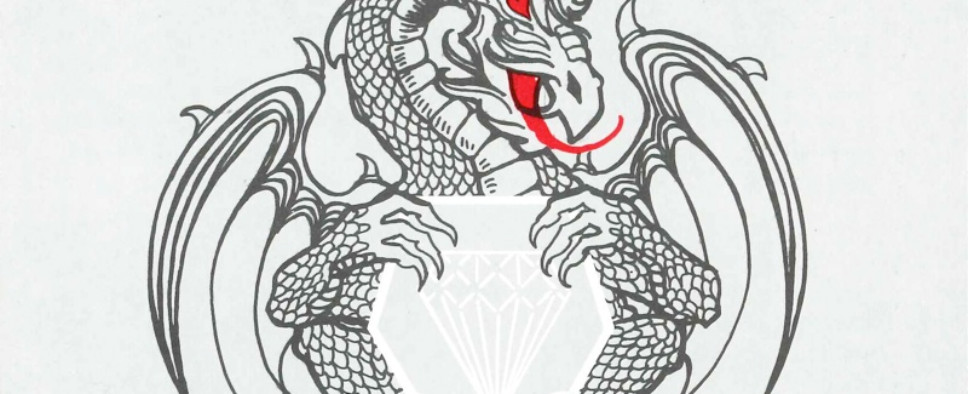Sir-tech/Wizardry Interview
-
Category: News ArchiveHits: 2393

There's an interview with Sir-tech co-founder Robert Woodhead up on 4Gamer, and while the entire feature is in Japanese, the folks over at RPG Codex took the time to translate it in its entirety. The article spans a number of topics, but the questions and answers dealing with the early days of the Wizardry series are the most applicable to us here. A healthy sampling to follow:
4Gamer: What about the Murasama Blade and the Shuriken? Ninjas and Samurais appear as jobs in Oubliette too, but only Wizardry had actual japanese weaponry.
※The original Apple II version of Wizardry 1 had Murasama instead of Muramasa.
Woodhead: Ah, no, this is the influence of James Clavell's Shogun (1975). The Murasama Blade and Shuriken came from that novel too.
4Gamer: And what about Wizardry #4 - The Return of Werdna's ARABIC DIARY(TALES OF MADNESS)? It became Necronomicon in the console game version, was it what it was supposed to be?
Woodhead: Yes, it was supposed to be the Necronomicon. 95% of Wizardry's n°4's scenario was written by Roe Adams, the ARABIC DIARY was his idea too. I read H.P.Lovecraft's works too, so I knew it was the Necronomicon.
4Gamer: I know a big part of the influence is D&D, but there is also some influence from J.R.R.Tolkien. In 1977 the NBC TV released the Hobbit's adventure anime. It was made by future studio Ghibli staff and was top of the line.
Woodhead: I didn't know about that anime. I read Tolkien's novels, obviously, but the principal influence is clearly D&D.
4Gamer: I thought Wizardry's unique spell lingo was similar to Tolkien's fictional languages though.
Woodhead: Ah, that's impossible (laugh). It's actually fake welsh, we chose that because it sounded good. Why welsh especially?...I totally forgot (laugh).
4Gamer: There is one word that I'd like to know more about: the Maelfic monster's name, where does it come from? In the Famicon version it uses the Pazuzu image, but...
Woodhead: It comes from the English word "malefic", meaning "Extremely evil". Like an embodiment of evil. It came from the witch's name in the Sleeping beauty fairy tale, Maleficent.
4Gamer: In the late 80's, there was a plan to make player character data from the software production house BPS's RPGs※ and SIR-TECH's Wizardry series convertible. I remember reading about it at the time in a PC magazine. What happened to that project?
※"Black onyx" and "Fire crystal", amongst others.
Woodhead: It probably happened while I was working on the Macintosh version of Wizardry, but...I vaguely remember BPS's Henk Rogers' name. I think it's just that it never actually happened.
4Gamer: I see... Ah, I'm sorry, I keep asking questions that kept me intrigued for a while.
Woodhead: No problem. You know, as most games, Wizardry is nothing but a ring in the chain that bind all games together. Games are influenced by their predecessors and cultural events, and Wizardry was no exception. And now, it is Wizardry's turn to influence the work of others. It really does feel like being part of a big chain.
4Gamer: Oh yes indeed. The "ring" that Wizardry created in Japan is quite noticeable. I don't think I would be exaggerating saying that many games, anime and novels are directly influenced by the Wizardry series.
Woodhead: It's an honor. But I do think we were lucky more than anything else. And I do think most of the thanks are due to the localization For Tune and GameStudio as well as Asuki's staffs. I especially think that the Famicon release was our best version of Wizardry. At the very least it didn't contain my badly drawn pictures! (bitter laugh)
4Gamer: When I replay the Apple II version now, I see how Wizardry was born from a melting pot of various influencing works. The character's jobs and races, the monsters, the pictures and text messages. But what did you accomplish with Wizardry that you feel was entirely original?
Woodhead: Well...the presence of a scenario, I think. Older Computer RPGs didn't have a defined goal and were not made with an end goal in mind. We added a scenario with puzzle-like components to our game. That's the thing that make it different from the other titles, I think. The n°4 of the series was the more representative of what we aimed to do.

